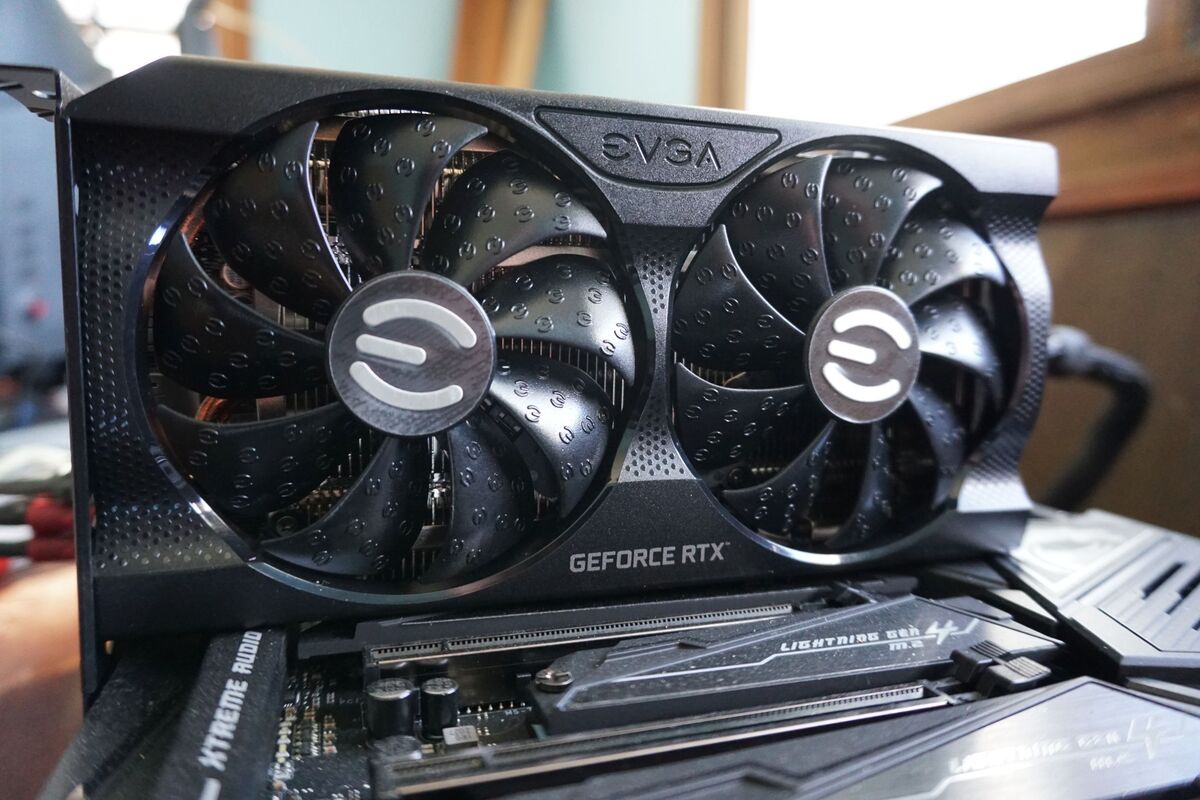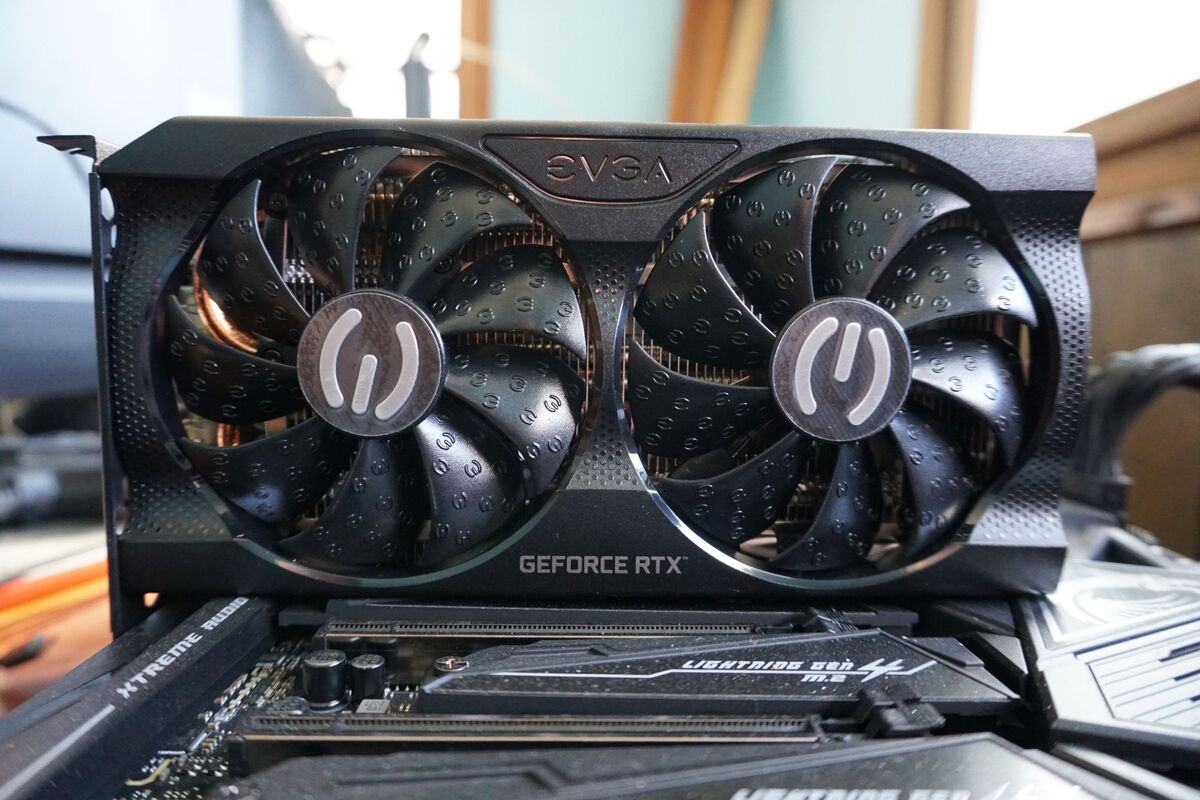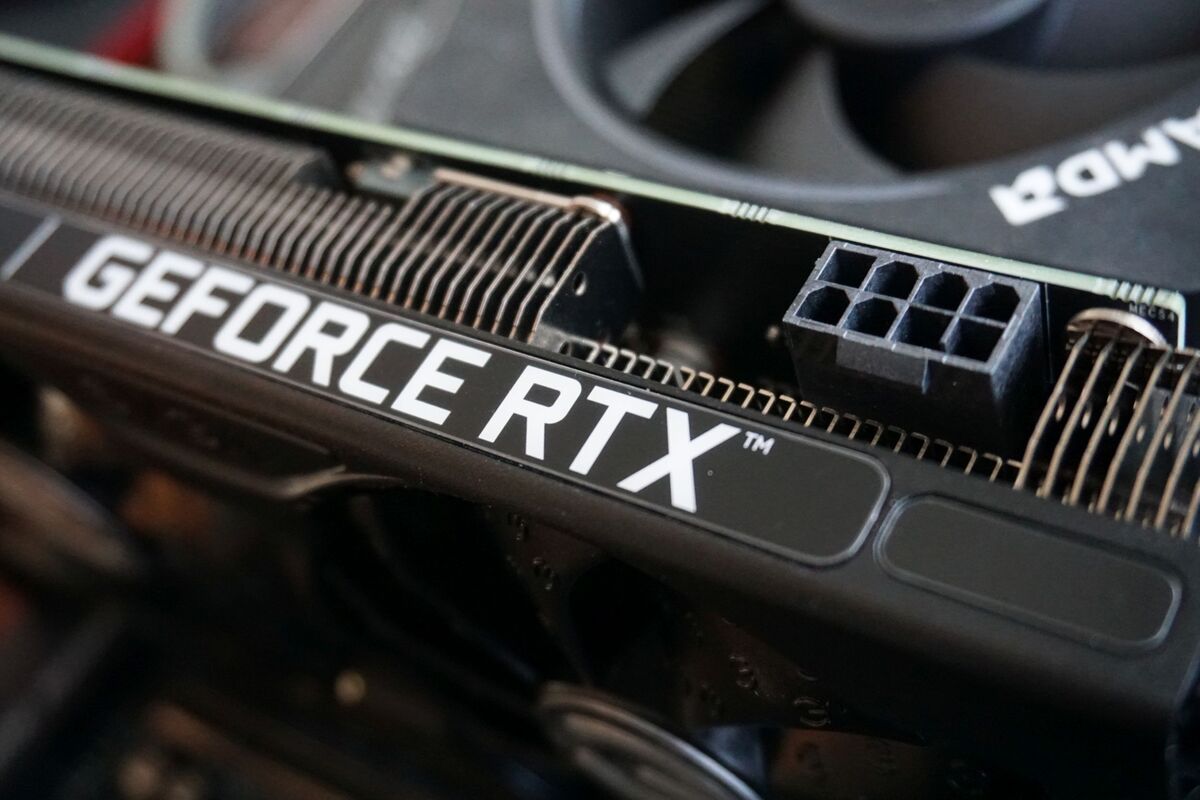Nvidia’s GeForce RTX 3060 is a competent graphics card in a time where being good enough is all it takes to sell out.

Brad Chacos/IDG
Today’s Best Tech Deals
Picked by PCWorld’s Editors
Top Deals On Great Products
Picked by Techconnect’s Editors
EVGA GeForce RTX 3060 XC Black Gaming
Show More
The $329 GeForce RTX 3060 finally brings Nvidia’s next-gen Ampere GPU architecture to the mainstream masses—at least in theory.
Normally, the release of Nvidia’s 60-class graphics cards sparks a lot of excitement. They tend to be the best-selling card of a GeForce generation. This time around, graphics cards are mired in a months-long shortage driven by a mixture of sky-high demand, logistics woes caused by the pandemic, a cryptocurrency boom that’s driving miners to gobble up GPUs, and some component shortages. Nvidia also priced this card higher than historical norms (the beloved GTX 1060 this card hopes to replace launched at $80 less). It’s a perfect storm, and things are so bad that Nvidia brought the ancient GTX 1050 Ti out of retirement.
But put all that aside. How does Nvidia’s new GPU actually handle? The company sent us an EVGA GeForce RTX 3060 XC Black Gaming to determine just that. This entry-level spin on the GPU is priced at the RTX 3060’s $329 MSRP (again, in theory). If we had to describe the graphics card in one word? It’s fine. It’s okay. That said, there are some key under-the-hood features definitely worth noting.
Before we wade into pages of benchmark results, if you want a faster, easier-to-read analysis of the card, be sure to check out our complementary coverage, GeForce RTX 3060: 5 key things you need to know about Nvidia’s new GPU. Now let’s dig in.
GeForce RTX 3060 specs, features, and price
In an unusual turn of events, Nvidia released the step-up GeForce RTX 3060 Ti before the base RTX 3060, and that Ti version is a spectacular 1440p gaming option. The more affordable (in theory) GeForce RTX 3060 more closely targets no-compromises 1080p gaming, though 1440p gaming is certainly possible in most cases. The non-Ti RTX 3060 uses a totally different GPU—the smaller GA106 graphics chip, rather than the beefier GA104 chip found in the Ti model and the $500 RTX 3070. Because of that, while the RTX 3060 and 3060 Ti share the same name, they’re wildly different under the hood.
Here’s how the GeForce RTX 3060 stacks up technically against the RTX 3060 Ti…
 Nvidia
Nvidia…and last-generation’s $350 GeForce RTX 2060.
 Nvidia
NvidiaThe GeForce RTX 3060 sports a slightly higher boost clock than its Ti cousin—which matters during gaming sessions that load up the GPU—but dramatically fewer CUDA cores. That drags the overall gaming performance far below the 3060 Ti’s level, though the new graphics card remains competitive for the segments it targets.
The most interesting part of the RTX 3060’s design is its memory. This GPU is paired with an ample 12GB of GDDR6 VRAM, besting the 8GB of GDDR6 in the RTX 3060 Ti and 3070, and even the 10GB available in the beastly GeForce RTX 3080 (although that’s of the much-faster GDDR6X variety). It’s clear that AMD’s decision to load up its new Radeon RX 6000-series graphics cards with plenty of memory caught Nvidia by surprise. The 192-bit memory bus on the RTX 3060 can handle either 6GB or 12GB capacities, and we suspect the RTX 3060 was originally intended to receive 6GB before AMD struck.
 Nvidia
NvidiaResizable BAR lets the CPU tap fully into the GPU’s memory, offering performance gains in some scenarios.
It’s probably the right choice from a marketing perspective—AMD’s forthcoming Radeon RX 6700 XT will indeed come with 12GB of its own—but practically, it’s a bit weird. The big 12GB memory buffer is overkill for the 1080p gaming Nvidia claims this card was built for. If you nudge games up to 1440p, you’ll often need to reduce graphics settings to achieve 60 frames per second at that resolution, which similarly reduces memory demands. If this wasn’t a rushed response to AMD’s moves, 8GB of memory would suffice–and cost less. Going with 6GB of memory would’ve been too little now that some games are pushing the 8GB barrier more regularly, however, so as-is, we’re glad to see the RTX 3060 ship with 12GB. Overkill is better than undershooting!
The GeForce RTX 3060 is also Nvidia’s first desktop graphics card to support the PCIe Resizable BAR feature, following in the footsteps of AMD’s Smart Access Memory (which is based around ReBAR). Resizable BAR lets your CPU see your graphics card’s memory, rather than accessing it in 256MB chunks, which can result in performance gains on compatible systems. Most of those gains are modest, as we discovered testing Smart Access Memory on the RX 6900 XT, but they can go all the way to 10 percent or more in the right games, running the right graphics settings and resolutions. ReBAR’s uplift is highly variable.
 Nvidia
NvidiaYou’ll need a compatible CPU and motherboard to enable Resizable BAR support, however. AMD kicked it off with its Ryzen 5000 processors and X570/B550 motherboards, though compatibility has also come to a variety of Intel platforms via BIOS updates. The image above, taken from Nvidia’s ReBAR explainer, shows which PC hardware currently supports the technology. Support varies from vendor to vendor and even motherboard to motherboard. If you want to use it, look for a compatible BIOS update for your specific motherboard. Currently, Nvidia activated ReBAR compatibility for only eight titles, so its usefulness is very limited. Nvidia says it will whitelist new games quickly. (AMD’s Smart Access Memory works with all games.)
Nvidia also added a hashrate limiter that cuts the performance of Ethereum mining in half, which should hopefully discourage cryptocurrency miners from snatching this up in droves. We’ll see if it lasts.
Of course, as a modern GeForce GPU, the RTX 3060 includes the latest ray tracing and tensor cores inside (we’ll dig into that later), as well as support for all of Nvidia’s wide range of value-adding features, such as Shadowplay, DLSS, Nvidia Broadcast, Nvidia Reflex, G-Sync, and more. For a deeper look at what’s new in the RTX 30-series “Ampere” GPU architecture, check out our much more detailed explanation in the beginning of our RTX 3080 review.
EVGA RTX 3060 XC Black Gaming design
 Brad Chacos/IDG
Brad Chacos/IDGNvidia isn’t rolling out one of its snazzy Founders Edition models for the RTX 3060, relying instead on custom cards from its partners to carry the load in today’s scorching-hot graphics card market. (GTX 1060 and RTX 2060 FE models hit the streets, for reference.) So the company sent over EVGA’s GeForce RTX 3060 XC Black Gaming for us to test.
The XC Black Gaming sticks to the RTX 3060’s reference specs under the hood, which helps it hit the GPU’s $329 retail price. That helps us evaluate the RTX 3060’s baseline performance, though if previous RTX 30-series and Radeon RX 6000-series launches are any indication, we expect graphics card makers to put most of their focus (and manufacturing output) on pricier custom models, like EVGA’s own overclocked, $390 RTX 3060 XC Gaming (no “Black”). Most of the early custom RTX 3060 models available in stores cost closer to $500 even before scalpers get their hands on them. Don’t expect to be able to find RTX 3060 cards on sale for $330 in reality while the current GPU crunch remains in effect.
 Brad Chacos/IDG
Brad Chacos/IDGEVGA designed the XC Black Gaming well despite its MSRP pricing. As you’ll see later, the card runs very cool and very quiet. Unlike most other custom RTX 30-series graphics cards, the XC Black Gaming sticks to a traditional two-slot thickness that should have no problem fitting into most PC cases, especially because the card measures a mere 7.94 inches in length—well shorter than the usual 10.5 inches-plus. It also requires just a single 8-pin power connector, hooked up to a recommended power supply of 550 watts or more.
Cost-cutting measures can easily be spotted. The shroud is plastic, there’s no RGB lighting to be found, and there’s no backplate to hide circuitry. There is a cut-out in the PCB to allow air to flow through the heat sink and out of your card, however, following the new RTX 30-series trend. The lack of a backplate makes the EVGA XC Black Gaming a bit of an eyesore in an era where backplates have largely become the norm, but it’s otherwise inoffensive aesthetically, with a blacked-out design. You’ll find the standard RTX 30-series connection loadout—one HDMI 2.1 port and three DisplayPorts—on EVGA’s card.
 Brad Chacos/IDG
Brad Chacos/IDGEVGA supports its hardware with a warranty and customer service representatives beloved by the gaming community. If you want to put the dual-axial fans and four copper heatpipes to more work, the company’s sublime Precision X1 GPU management software contains everything you need to monitor and overclock the card. The slickly designed program is one of our favorites.
But now the stage is set. Let’s get to the benchmarks.
Next page: Our test system, gaming benchmarks begin
EVGA GeForce RTX 3060 XC Black Gaming
Nvidia’s GeForce RTX 3060 is an okay graphics card for no-compromises 1080p gaming in a time where being good enough is all it takes to sell out. EVGA’s custom XC Black Gaming version offers no frills but runs cool and quiet.
Pros
- No-compromises 1080p gaming
- 12GB of memory
- Nvidia’s excellent software/features: G-Sync, DLSS, Reflex, and more
- EVGA’s XC Black Gaming is small, cool, and quiet
Cons
- 1440p gaming often requires visual tweaks to hit 60fps
- Slightly more performance, slightly less price vs. last gen
- MSRP is higher than we’d like
- Hard to find at MSRP in today’s wild GPU market
- No backplate or other frills in EVGA’s XC Black Gaming

